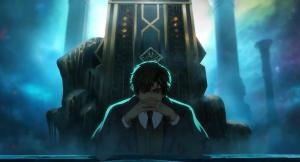The Walking Dead on Friday was honored as Television Series of the Year during the 3rd Annual KODAK Film Awards.
Videos by ComicBook.com
All nine seasons of the zombie drama to date have been shot on 16mm and 35mm film. The AMC original belongs to a small class of television series not to be shot digitally, joined by Westworld, I Am the Night, Succession, and American Horror Story.
“We’re one of the handful of shows, we’ve been shooting on 16mm film ever since the pilot of the show,” Walking Dead showrunner Angela Kang told Bionic Buzz on the KODAK red carpet.
“[First showrunner] Frank Darabont, when he set out to make the show, fully intended to shoot digital. They tested multiple cameras — they brought along a 16mm camera for fun, and it ended up looking the best. And it’s part of what created the unique look of the show. And we just have loved the journey ever since.”
Longtime Walking Dead executive producer and production manager Tom Luse, who has been with the series since its 2010 start, previously elaborated on the process in a 2014 interview with KODAK, where he explained Greg Nicotero’s special effects makeup used to create walkers photographed best when shot on film.
“All the producers were heavily involved and we wanted to test different options available to capture the show. We rented a studio at Panavision and got a couple of digital cameras as well as a 35mm camera, and then kind of tossed in a 16mm camera at the last minute. Over the course of a day, we ran a series of tests with David Tattersall, our [Director of Photography] for the pilot,” Luse said.
“At that time, we all felt very strongly that we were going to end up shooting the show on digital. But as we did our tests, we had Greg Nicotero, our zombie guru who is also now an executive producer, do some makeup tests, and we shot them both on stage and out in daylight. In looking at the tests, we discovered that the makeup looked much better on film.
“We were very excited when we saw the 35mm test, but then when we put the 16mm test up, which is what we shoot The Walking Dead on, it not only made the makeup look better but it had a sort of classic horror film look to it that resonated with all of us. … The way it [Super 16] takes the makeup and handles the contrasts between exteriors and interiors is astonishing.
“With the interiors on our show, there’s no electricity; it’s a post-apocalyptic universe, so we have a lot of scenes that go from day exteriors to interiors and the quality of image going from bright exteriors to dark interiors was vastly superior.”
Major effects shots will sometimes be captured on 35mm “just to give our visual effects department a larger image,” Luse added.
“So we do carry one 35mm camera. Most episodes shoot on multiple cameras; oftentimes we’ll shoot three or sometimes four cameras.”
Film cameras also prove durable on The Walking Dead‘s Georgia set, which has acted as Virginia since Season Five, where the filmmakers “shoot in extremely hot, humid situations for much of the year and in very arduous conditions,” Luse explained.
“The film cameras are extremely reliable; it can get as hot as it can get and the cameras can still record a great image. The flexibility of being able to move the camera and set up quickly in 16mm is also an enormous advantage.”
The Walking Dead, now pitting survivors Daryl Dixon (Norman Reedus) and Michonne (Danai Gurira) against the walker skin-clad Whisperers, premieres new episodes of its ninth season Sundays at 9/8c on AMC. A tenth season is due out this October.









